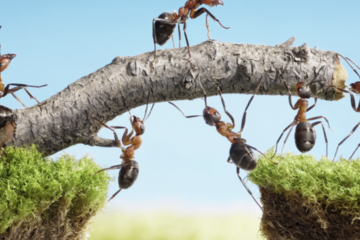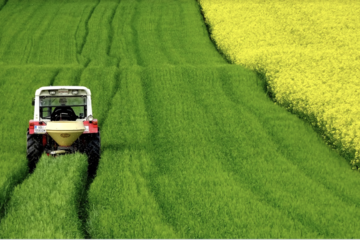Browse
Water, Energy, And The Environment
Students with ADHD
Primer text from The College of William & MaryADHD is one of the most commonly diagnosed conditions of children (Centers for DiseaseControl and Prevention, 2015).
In a 2016 Centers for Disease Control and Prevention study, scientists found that 6.1 million children aged 2-17 years living in the U.S. had been diagnosed with attention-deficit/hyperactivity disorder (ADHD), which is similar to previous estimates.
Ages 2-5: Approximately 388,000 children
Ages 6-11: Approximately 2.4 million children
Ages 12-17: Approximately 3.3 million children
The diagnostic term attention deficit/hyperactivity disorder (ADHD) refers to individuals who display patterns of inattention, impulsivity, and overactive behavior that interfere with daily functioning (American Psychiatric Association [APA], 2013).
The Diagnostic and Statistical Manual (DSM) V (APA, 2013) criteria for diagnosing ADHD listthree types of ADHD and the accompanying characteristics.
Predominantly inattentive type.The student may:o submit inaccurate or incomplete work,o have difficulty attending to conversations, activities, or tasks,o be easily distracted,o have difficulty following directions,o frequently lose materials, and/oro have difficulty organizing tasks and materials.
By:
Rosey
Wednesday, May 12, 2021
AGRI-FOOD SYSTEMS
+2

Leave a comment
Sharing Strategies
Think, Pair, Share/Square Share/Group Share: Using thisapproach, students work with peer partners to discuss the lesson, check each other’swork, and share strategies.Partner Reading Student partners take turns reading orally and listening to each other. Peer partners can also be helpful with discussing answers to comprehension questions, spelling, proofreading, and solving math problems.
Self-Correction Opportunities Students use calculators or a key provided by the teacher to check their answers.Learning Games Students play board games that reinforce skills such as sight vocabulary, phonics, grammar rules, and basic math facts.
By:
Rizla Niaz
Wednesday, May 12, 2021
CULTURE AND SOCIETY
+2

CULTURE AND SOCIETY
+1
Wednesday, Aug 26, 2020

Leave a comment
Aquaculture species are reared for particular traits such as growth rate, survival rate, meat quality, resistance to diseases, age at sexual maturation, fecundity, shell traits like shell size, shell colour, etc.
By:
Ameliya
Thursday, May 13, 2021
CULTURE AND SOCIETY
+2

Leave a comment
Quality traits in aquaculture
Quality traits in aquaculture
Aquaculture species are reared for particular traits such as growth rate, survival rate, meat quality, resistance to diseases, age at sexual maturation, fecundity, shell traits like shell size, shell colour, etc.
Growth rate – growth rate is normally measured as either body weight or body length. This trait is of great economic importance for all aquaculture species as faster growth rate speeds up the turnover of production.[19] Improved growth rates show that farmed animals utilize their feed more efficiently through a positive correlated response.[18]
Survival rate – survival rate may take into account the degrees of resistance to diseases.[18] This may also see the stress response as fish under stress are highly vulnerable to diseases.[19] The stress fish experience could be of biological, chemical or environmental influence.
Meat quality – the quality of fish is of great economic importance in the market. Fish quality usually takes into account size, meatiness, and percentage of fat, colour of flesh, taste, shape of the body, ideal oil and omega-3 content.[18][
By:
Ameliya
Wednesday, May 12, 2021
AGRI-FOOD SYSTEMS
+4

Leave a comment
Plant breeding
Plant breeding
Plant breeding has been used for thousands of years, and began with the domestication of wild plants into uniform and predictable agricultural cultigens. High-yielding varieties have been particularly important in agriculture.
Selective plant breeding is also used in research to produce transgenic animals that breed "true" (i.e., are homozygous) for artificially inserted or deleted genes.[1
By:
Ameliya
Wednesday, May 12, 2021
AGRI-FOOD SYSTEMS
+5

Leave a comment
Agri and food Scholar
Agriculture is the science and art of cultivating plants and livestock.[1] Agriculture was the key development in the rise of sedentary human civilization, whereby farming of domesticated species created food surpluses that enabled people to live in cities. The history of agriculture began thousands of years ago. After gathering wild grains beginning at least 105,000 years ago, nascent farmers began to plant them around 11,500 years ago. Pigs, sheep and cattle were domesticated over 10,000 years ago. Plants were independently cultivated in at least 11 regions of the world. Industrial agriculture based on large-scale monoculture in the twentieth century came to dominate agricultural output, though about 2 billion people still depended on subsistence agriculture into the twenty-first.
By:
Ameliya
Wednesday, May 12, 2021
AGRI-FOOD SYSTEMS
+4

Leave a comment
venture capital :
Agriculture is the science and art of cultivating plants and livestock.[1] Agriculture was the key development in the rise of sedentary human civilization, whereby farming of domesticated species created food surpluses that enabled people to live in cities. The history of agriculture began thousands of years ago. After gathering wild grains beginning at least 105,000 years ago, nascent farmers began to plant them around 11,500 years ago. Pigs, sheep and cattle were domesticated over 10,000 years ago. Plants were independently cultivated in at least 11 regions of the world. Industrial agriculture based on large-scale monoculture in the twentieth century came to dominate agricultural output, though about 2 billion people still depended on subsistence agriculture into the twenty-first.
By:
Ameliya
Wednesday, May 12, 2021
AGRI-FOOD SYSTEMS
+4

Leave a comment
Nature
isotope labeling agents
Agriculture is the science and art of cultivating plants and livestock.[1] Agriculture was the key development in the rise of sedentary human civilization, whereby farming of domesticated species created food surpluses that enabled people to live in cities. The history of agriculture began thousands of years ago. After gathering wild grains beginning at least 105,000 years ago, nascent farmers began to plant them around 11,500 years ago. Pigs, sheep and cattle were domesticated over 10,000 years ago. Plants were independently cultivated in at least 11 regions of the world. Industrial agriculture based on large-scale monoculture in the twentieth century came to dominate agricultural output, though about 2 billion people still depended on subsistence agriculture into the twenty-first.
By:
Ameliya
Wednesday, May 12, 2021
CULTURE AND SOCIETY
+2

Leave a comment
Permanently positively charged stable isotope labeling
Permanently positively charged stable isotope labeling
Permanently positively charged stable isotope labeling agents and its application
in the accurate quantitation of alkylphenols
migrated from plastics to edible oils
Chong Ma, Shijuan Zhang *, Xia Wu, Jinmao You **
Shandong Province Key Laboratory of Life
-
Organic Analysis, key Laboratory of
Pharmaceutical Intermediates and Analysis of Natural Medicine, Qufu Normal
University, Qufu
, PR China
By:
Ameliya
Wednesday, May 12, 2021
CULTURE AND SOCIETY
+3

Leave a comment
venture capital :
A new permanently positively charged stable isotope labeling (SIL) agent pair, 4-(((2,5-dioxopyrrolidin-1-yl)oxy)carbonyl)-N,N,N-trimethylbenzenaminium iodide(DPTBA) and its deuterated counterpart d3-DPTBA,
By:
Ameliya
Wednesday, May 12, 2021
AGRI-FOOD SYSTEMS
+6
Leave a comment
venture capital :
A new permanently positively charged stable isotope labeling (SIL) agent pair, 4-(((2,5-dioxopyrrolidin-1-yl)oxy)carbonyl)-N,N,N-trimethylbenzenaminium iodide(DPTBA) and its deuterated counterpart d3-DPTBA,
By:
Ameliya
Wednesday, May 12, 2021
AGRI-FOOD SYSTEMS
+5

Leave a comment